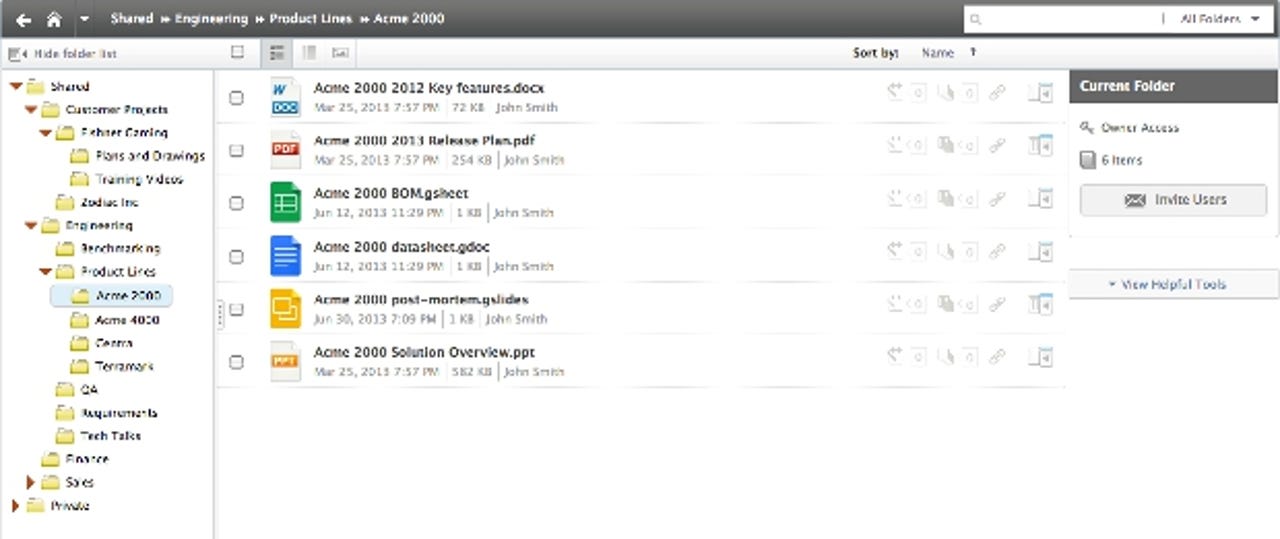Egnyte ties into Google Drive to add enterprise access control


Enterprise file-sharing firm Egnyte says the latest version of its hybrid cloud storage product now integrates with Google, giving IT teams permissions control over Google Drive and offering users a single view of all their files — whether on-premise or online.
As well as centrally-managed access control, the cloud storage firm's collaboration with Google is designed to add real-time auditing and will also enable users to share files with trusted customers without Google accounts.
"The goal is to simplify things — to have a single view where you go to get all your files. It doesn't matter whether it's a Google Doc or a regular document," said Egnyte product management VP Rajesh Ram.
"From a user standpoint, it looks seamless. They are logged into Egnyte and when they want to create a Google doc they can do that with just a single click," Ram said.
"Or if they've already created a Google document and they want to pull that into on-premise storage like NetApp, then it's a simple single click," he said.
Egnyte has worked with Google on the APIs into its platform to ensure Google Docs files created in the two clouds reference each other, with authentication tokens passing back and forth between the two systems.
Egnyte CMO Barry Phillips said Google Docs will now gain the same sort of auditing, and access permissioning as, say, corporate NetApp files, giving firms a common security system across all documents.
"The permissioning, the auditing and the external sharing are something that Google Docs just does not have right now and that's critical for them to get into the enterprise," Phillips said.
"So it's a combination of the collaboration editing you see with Google Docs and we're adding in all the relevant security and auditing features that you need for enterprises to adopt it."
According to Egnyte's Ram, the storage picture now emerging is not one of pure cloud use but rather of organisations continuing to use on-premise storage from companies such as NetApp and EMC as well cloud services such as Google Drive and Google Docs.
"Contrary to the earlier viewpoint — that it's going to be all or nothing in the cloud — we actually see the world becoming more hybrid. So the integration we're launching is really to tie the world of Google Docs with the world of on-premise storage," Ram said.
"With this comes the ability for a customer to now say, 'I have this project that I'm working on. I have some Word documents and some AutoCAD drawings but I want to have a Google Doc located side by side with it. I want to be able to access it anywhere, in the cloud or within the network on a share I have on my NetApp filer'," he said.
Ram said Egnyte has defined its identity on integrating on-premise storage with cloud-based access for file sharing, with customers given full control over data.
"They get to manage the environment in terms of the files they place [in the cloud] and which users to give access to. They also get to tie it into their existing investments. So let's say they had Active Directory and they wanted to tie that in for authentication purposes, they could do that," he said.
About 12 percent of Egnyte's business comes from Europe, where it has been active for 18 months. As well as planning to open a European sales operation in the first quarter of 2014, Egnyte is also staffing up its software engineering office in Poznan, Poland, which focuses on user experience.
"We're trying to augment our skills in the US. What the engineering office here in Europe is doing is focusing on UX capabilities," Ram said.
"We're actually finding really good UX capabilities in Europe. In Silicon Valley it's becoming harder to find and it's getting more expensive. We're now also expanding that to include some of the server side engineering as well."